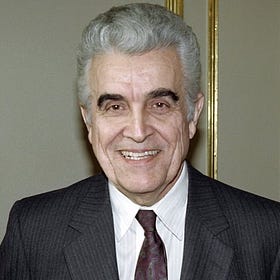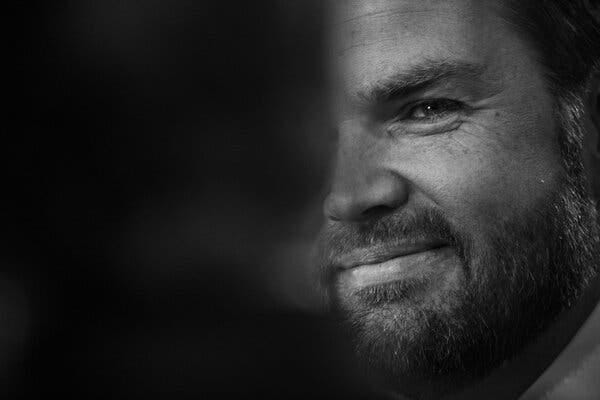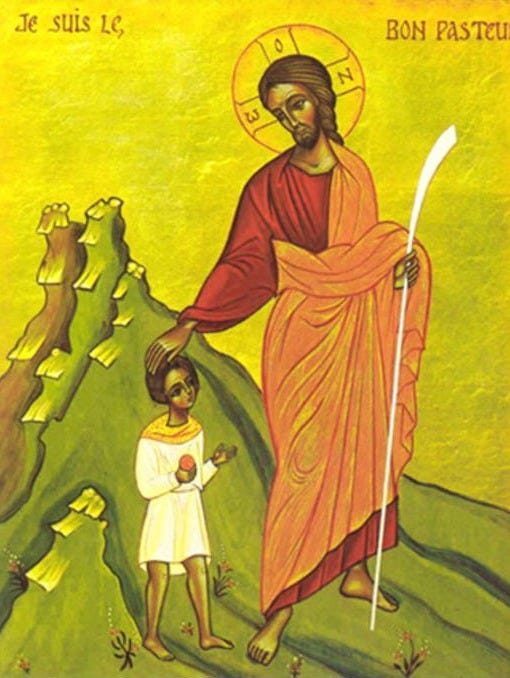When “deconstruction” entered the cultural zeitgeist a couple years ago, a few of you might have wondered why everyone was talking about this thing you did in English class. People now used it to talk about questioning their religious faith; you might have used it in college to question the meaning of a text like The Scarlet Letter.
In fact, I first heard about “deconstruction” from other conservative Christians in the early 2000s, as part of the larger scare around “postmodernism.” Apologists responding to the New Atheist movement included, in their scope, a fairly obscure French intellectual movement that had become popular at elite American universities in the 90s. Deconstruction was, fundamentally, a way of reading texts and questioning the transmission of knowledge through the Western philosophical and literary canon; it became, in the hands of reactionaries, shorthand for saying their opponents believed in no such thing as “objective truth.” That the “enemies of religion” had to resort to such an outlandish and silly claim was presented as sufficient evidence for their ideological debasement.
The problem, of course, was that nobody outside of a few elite and insulated proponents of deconstruction actually believed in that kind of philosophical extreme, and those who did even talked themselves out of it a few decades later, though few seemed to notice.
A whole history remains to be written about deconstruction’s reception into American culture, Christianity, and politics. But one of the main lessons to be learned is an old one: that when an academic theory leaves its scholarly confines, it is likely to leave a lot of its nuance behind as well. This is true of specialist languages of any kind, actually. Combine this with our collective distrust of “experts” while everyone is simultaneously becoming one, and it’s very likely that the broadly understood version of a theory or discourse (theology, anyone?!) ends up a rather deformed and misleading parody of itself.
This is exactly why, about a month ago, I wrote an article trying to disentangle the thought of René Girard from a particularly dangerous brand of right-wing politics that’s becoming increasingly interested in his work (represented to the public largely by vice presidential hopeful JD Vance and his mentor, billionaire Peter Thiel). I argued that a surface-level reading of Girard might generate a few novel ideas for pessimistically defending social and moral hierarchy (as it appears to have done for Thiel), or for identifying cosmopolitanism as a secretly ticking time bomb that might be defused by new respect for tribal differences (as it appears to have done for Vance). But genuine effort to understand Girard and his work, I maintain, ultimately and relentlessly leads one to conclusions very much apart from these.
René Girard, J. D. Vance, and You
In my last post discussing the idea of “sin” in Tanararive Due’s novel, The Reformatory, I veered into a few obscure theological and anthropological ideas related to “mimetic theory,” a body of thought developed over the last half century by French-American scholar René Girard.
At the time, that piece was motivated by others in a growing number of outlets that were picking up on JD Vance’s own eclectic political and spiritual influences–Girard among them. An article here, a name-drop there. I was concerned about the assumptions that might be made as this obscure thinker I deeply appreciated was suddenly thrust into the North American zeitgeist during one of the most volatile presidential elections in history.
Those concerns came full circle following Donald Trump’s debate with vice president Kamala Harris last month, during which the former president punctuated the immigration issue with stories of illegal Haitians “eating the pets of the people who live” in the town of Springfield, OH. (He underscored the credibility of these stories by insisting he “saw people on television.”) And JD Vance, his running mate, continued to run with the line for weeks after.
The stories are completely unsubstantiated. Even Ohio Governor Mike DeWine came to the stern defense of Springfield’s Haitian population. Not only are the immigrants legally in Ohio, but many of them are here by invitation, arriving to work when Springfield was growing its economy and encountering labor shortages. Springfield literally wouldn’t exist as it does now without them.
But in the political climate of 2024, as the Republican platform is increasingly defined by “blood-and-soil” nationalism, old resentments have opportunities to break out. We see evidence that some folks aren’t concerned with illegal immigration so much as with immigration in general. With having to share space with people who aren’t like them. Sometimes, the prejudice may break through from an entirely unconscious place, as seems to have occurred when a Springfield woman, empathizing with her neighbor over her missing cat, suggested on Facebook that another neighbor may have eaten the poor animal.
But those who pick up these stories and run with them do, at some level, know what they’re doing. Their problems may be valid, genuine, complex and so only inchoately felt, but at some point a choice is deliberately made to focus not on the problem and its discrete, addressable parts, but on an Other who can be imagined as the source of the problem and whose suffering can somehow redeem it.
“In Christ,” JD Vance wrote in 2020:
we see our efforts to shift blame and our own inadequacies onto a victim for what they are: a moral failing, projected violently upon someone else. [I learned from René Girard that] Christ is the scapegoat who reveals our imperfections, and forces us to look at our own flaws rather than blame our society’s chosen victims.
When he saw a thin margin of his constituents engaged in scapegoating, however, this supposedly repentant “keyboard warrior” held up a bullhorn to their fear, encouraging them to “keep the cat meme flowing.” Never mind that the folks being scapegoated are also his constituents. When faced with ample evidence and the scathing rebuttal of a Republican governor, Vance doubled down and said in a later interview that he was willing “to create stories so that the … media actually pays attention to the suffering of the American people.”
During his own debate with Tim Walz a few weeks later, Vance said, “When you screw up, when you misspeak, when you get something wrong and you change your mind, you ought to be honest with the American people about it.” He did not say this in response to throwing fellow Ohioans under the bus. He said it in response to having once criticized Donald Trump.
It’s easy to chalk this up to simple hypocrisy on Vance’s part. In fact, it’s probably the simplest interpretation of the gulf between his words and his behavior. Watching from across the Atlantic, French writer Bernard Perret writes for Esprit that Vance “shamelessly dons the costume of the repentant by retrospectively accusing himself of persecutory behaviors on social networks” [trans]. Yet at the same time, Vance allies himself with a political campaign that makes persecutory behavior part of its core strategy. And it is precisely Vance’s imitation of this persecutory behavior–all while holding René Girard’s insights into rivalry and scapegoating under his tongue–that makes Perret fearful for Girard’s reception and ultimate legacy.
Perrett is right to worry, because other commentators have found the line that Vance is merely a hypocrite a little too simplistic, and looked to Girard for deeper explanations. Reporting for POLITICO, Ian Ward also wonders how Vance, who “reflected articulately–and even eloquently–about Girard’s theory of the scapegoat” could now, five years later, “reverse course” to participate in the transparent scapegoating of immigrants in his own state. Rather than hypocrisy or mere false consciousness, Ward sees a more deliberate political strategy at work:
Though Girard never said so outright, some of his interpreters have argued that Girard’s idea of the Christian ethic — which in theory offers an alternative to ritualistic violence as a basis for social cohesion — cannot in practice serve as the basis for a large, complex and modern society … Although an elite spiritual minority may take up Christianity as its guiding ethic, the majority of mass society will continue to require some amount of ritual violence to preserve itself. According to this formulation, scapegoating is not only inevitable but useful, insofar as it builds social cohesion among large, otherwise diverse groups of people.
According to Ward, it may be that Vance understands that scapegoating is a “moral failing” – at least on a small, personal scale. But when one encounters the pragmatic arena of politics, one needs to be willing to use every tool in the box. And at that point where hard choices and sacrifices need to be made, he believes you need an “elite spiritual minority” with a powerful “guiding ethic” training the rest of us in the ways we should go.
Ward suggests Vance sees himself as among these “spiritual elite,” and Perrett seems to suspect something similar in Vance’s obsession with “virtue”: “It should be noted that [Vance] sees evil as an ‘imperfection,’ a deficit of individual morality,” and that American society’s chief evil is its failure to cultivate “private virtues” of the sort that Vance would recognize as valid. “We are,” Perrett writes, “far from the spirit of Catholic social doctrine, its defense of the common good, and social justice that is never subordinated to criteria of individual morality.” But we are in the realm of a social theory in which the “spiritual elite,” enlightened to their own sins, turn around and use those impulses more pragmatically to rule the spiritually “ignorant” for whom violence is inevitable.
And this, ultimately, is what concerns me. Why I keep writing about this. The version of mimetic theory on offer here is a project “from above.” It is, much as Vance describes it (and as he received it from Thiel), a God-given tool for tinkering with oneself. A divine auditor of personal relationships and priorities. It is a way of getting spiritually grounded within oneself by forswearing vapid competition and seeking deeper wells of virtue. The ultimate end of this process? You do, in fact, become virtuous. Part of a spiritual elite who are “captain of their [own] ship.” You become better than all the mimetically entangled people who haven’t done what you’ve done. You even earn some measure of authority over them.
Most ways you slice it, this goal is a version of what Girard himself termed the “Romantic lie”: a fully actualized will, a self sundered from all reciprocity with others and their desires. A person who can only exist through self-deception and who is destined for aimlessness and resentment. One can already see this aimlessness driving Vance through his essay in The Lamp, as he unwittingly presents himself as one ping-ponging through influences: his dear Mamaw’s Christianity, his military buddies’ atheism, his family’s economic conservatism, the expectations of his elite education setting him at variance with a desired domestic bliss, all finally reconciled by the intellectual religiosity of a Silicon Valley billionaire.
I feel deep sympathy with Vance as he unspools this biography because I recognize these as the words of a man like myself: desperate to belong, but always unsure of how.
And this, to me, darkens Vance’s conversion to Catholicism with a tragic edge. He sees the crucified innocent, the all-powerful God made victim of the world. But what he obsesses over is the innocence and the power, and not what Christ means by those things. He practices the spiritual discipline of self-criticism, only to find himself surrounded by other self-made victims who need to be recalled to their responsibilities. He finds, in Christianity, the frustrated promise of a social order that can make others take such responsibility.
What Vance is seeing is real, and a real problem. But by starting with himself, he’s also missing the real victims. The real scapegoats required by his political vision. Obsessed with innocence and our collective lack of it, he fails to see the innocent Christ in solidarity with those who, though they are guilty of their own sin, still suffer unjustly. Obsessed with political power, he overlooks the power of the Forgiving Victim who, Perrett writes, “demystifies any form of moral order, of collective good conscience based on a preconceived idea of virtue or perfection, always likely to lead to a sacralization of exclusion, oppression, and violence.”
Ian Ward is right to note that Girard’s understanding of the Gospel does not provide any sort of new social order. What he gets wrong, however, is this idea that Girard believed the Gospel’s “spiritual enlightenment” thus needed to be “supplemented” with political pragmatism. For Girard, this couldn’t be further from the truth. The ethos of the Forgiving Victim was not Girard’s starting point–but it did become his first principle: the Gospel is an anti-myth, breaking apart all our cultural ambitions from the inside, from the margins–from below. The God’s-eye view does not come, as we expect, from the ineffable and inimitable Father ordering the cosmos, providing us the basis for our political analogies. It comes from the mud-caked Son in solidarity with the poor and the down-trodden, with the cast-offs on which society builds and justifies itself. It comes from a God who subjects himself to his own divine curse in order to demonstrate the lengths to which he will go to reconcile his creation.
This lover of humanity, lower than the dust, also proclaims, “If you have seen me, you have seen the Father” (John 14:9). His solidarity–an unquenchable passion unto death and defying death–is the cosmic order sung to our stopped-up ears by the losers under our feet. It invites us to come down, to remember that we are dust, to “admit gladly that we are sinners” and so let ourselves be found by One who searches high and low for uninvited guests, to recline at a table set specifically for the outsiders, the cast-offs, the scarred and the scandalized, perpetually unfinished in our virtue until we heed the God who says, “You have only to be still” (Ex 14:14).
And this conviction about who God is almost makes me weep for JD Vance, along with those devastated by his power and his politics. Because I recognize in him someone like me, who wants to belong but doesn’t know how. Who, though he quotes his beloved Augustine at length, never prays with the saint, “You have made us for yourself, O Lord, and our heart is restless until it rests in you.”







